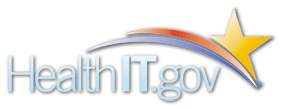Medical Practice Efficiencies & Cost Savings
Many health care providers have found that electronic health records (EHRs) help improve medical practice management by increasing practice efficiencies and cost savings.
A national survey of doctors1 who are ready for meaningful use offers important evidence:
- 79% of providers report that with an EHR, their practice functions more efficiently
- 82% report that sending prescriptions electronically (e-prescribing) saves time
- 68% of providers see their EHR as an asset with recruiting physicians
- 75% receive lab results faster
- 70% report enhances in data confidentiality
Based on the size of a health system and the scope of their implementation, benefits for large hospitals can range from $37M to $59M over a five-year period in addition to incentive payments.2
Savings are primarily attributed to automating several time-consuming paper-driven and labor-intensive tasks3
- Reduced transcription costs
- Reduced chart pull, storage, and re-filing costs
- Improved and more accurate reimbursement coding with improved documentation for highly compensated codes
- Reduced medical errors through better access to patient data and error prevention alerts
- Improved patient health/quality of care through better disease management and patient education
Electronic Health Records Create More Efficient Practices
EHR-enabled medical practices report:
- Improved medical practice management through integrated scheduling systems that link appointments directly to progress notes, automate coding, and managed claims
- Time savings with easier centralized chart management, condition-specific queries, and other shortcuts
- Enhanced communication with other clinicians, labs, and health plans through:
- Easy access to patient information from anywhere
- Tracking electronic messages to staff, other clinicians, hospitals, labs, etc.
- Automated formulary checks by health plans
- Order and receipt of lab tests and diagnostic images
- Links to public health systems such as registries and communicable disease databases
Affect On Revenue: Automating Clinical Documentation And Orders2
- Enhanced ability to meet important regulation requirements such as Physician Quality Reporting Initiative (PQRI) through alerts that notify physicians to complete key regulatory data elements
- Reduction of time and resources needed for manual charge entry resulting in more accurate billing and reduction in lost charges
- Reduction in charge lag days and vendor/insurance denials associated with late filing
- Charge review edits alerting physicians if a test can be performed only at a certain frequency
- Alerts that prompt providers to obtain Advance Beneficiary Notice, minimizing claim denials and lost charges related to Medicare procedures performed without Advance Beneficiary Notice
Electronic Health Records Reduce Paperwork
EHRs can reduce the amount of time providers spend doing paperwork.
Administrative tasks, such as filling out forms and processing billing requests, represent a significant percentage of health care costs. EHRs can increase practice efficiencies by streamlining these tasks, significantly decreasing costs.
In addition, EHRs can deliver more information in additional directions. EHRs can be programmed for easy or even automatic delivery of information that needs to be shared with public health agencies or for the purpose of quality measurement.
Electronic Prescribing (E-Prescribing)
Paper prescriptions can get lost or misread. With electronic prescribing (e-prescribing), doctors communicate directly with the pharmacy. An e-prescribing system can save lives (by reducing medication errors and checking for drug interactions), lower costs, and improve care. It is more convenient, cheaper for doctors and pharmacies, and safer for patients. In short, e-prescribing is an important, high-visibility component of progress in health information exchange.
Electronic Health Records Reduce Duplication of Testing
Because EHRs contain all of a patient's health information in one place, it is less likely that providers will have to spend time ordering—and reviewing the results of—unnecessary or duplicate tests and medical procedures. Less utilization means fewer costs.
- Jamoom, E., Patel, V., King, J., & Furukawa, M. (2012, August). National perceptions of ehr adoption: Barriers, impacts, and federal policies. National conference on health statistics.
- Bell, B, Thornton, K. (2011). From promise to reality achieving the value of an EHR. Healthcare Financial Management, 65(2),51-56.
- Kumar, S., & Bauer, K. (2011). The business case for implementing electronic health records in primary care settings in the United States. Journal of Revenue and Pricing Management, 10(2), 119-131.




